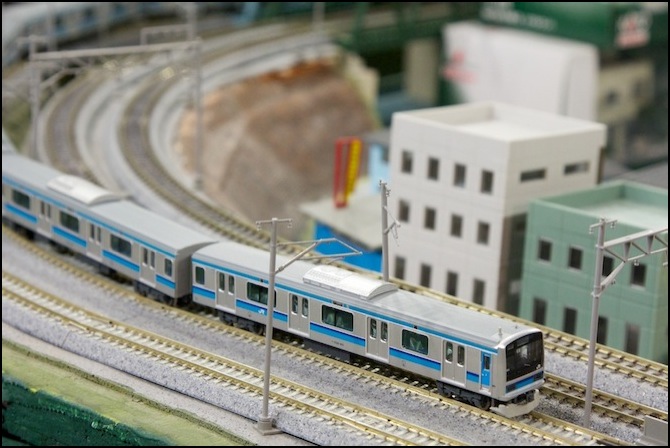Collection: Subway Trains
My layout includes a mostly-underground Subway Line, so it needs some appropriate subway trains. In Japan, it’s fairly common for (some) trains to share above-ground suburban commuter lines with normal commuter trains to reach outer areas, then enter and share the subway tunnels with ordinary subway trains to reach the city center. Trains for this use differ somewhat from ordinary trains, as they need to fit the shorter, lower, and sometimes narrower profiles required for the tunnels. They also need emergency exits on the front and rear of the train. See my prototype Tōkyō Subways page for examples.
Tōkyō Metro 10000 Series
This train operates on the Tōkyō Metro Yūrakuchō & Fukutoshin lines. Because it is a narrow-gauge train powered from 1500 V DC overhead catenary, it can also operate on above-ground commuter lines. Today these are used for run-through service on the Tōbu Tōjō and Seibu Yūrakuchō and Seibu Ikebukuro Lines. in 2012 these will also be used for run-through service to the Tōkyū Tōyoko line.
The motor is fairly noisy, which may make me run it less often. However, I have two of them (one by Greenmax, and one by Kato) and expect to make use of them on both the Subway and Commuter lines once I’ve converted them to DCC (which is going to take some work).
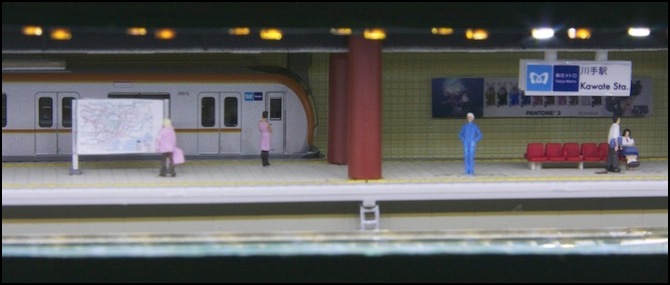
Tōkyō Metro Ginza 01 Series
This train operates on the third-rail powered Ginza line, one of Tōkyō’s two third-rail, standard gauge lines. As such, I’ll probably limit it to running in the tunnels of the Subway line, and not as run-though service with the above-ground commuter line (which is supposed to be a narrow-gauge, overhead-power, line typical of Tōkyō commuter lines). I have two of these. I’d planned to make these the first trains on the subway, but although they can accept Kato’s cab light DCC decoders, they are too narrow for the EM13 motor decoder, which means I’ll need to wire-in the decoder for the motor, so I may do one of the other trains first.
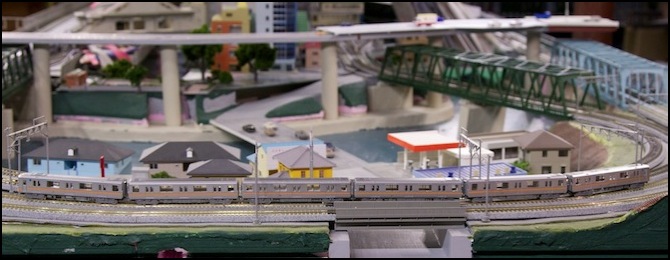
The cars are relatively small compared to the typical commuter train. Here’s a couple of photos comparing it with the E231:
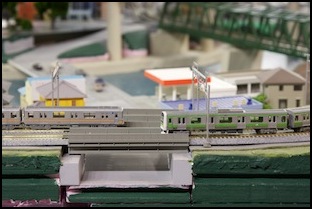
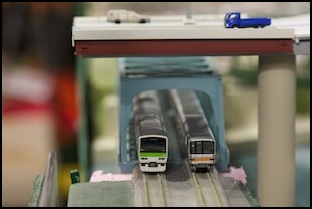
Tōkyō Metro Marunouchi 02 Series
This train operates on the third-rail powered Marunouchi line, which was the inspiration for the bridge over the river below the Riverside Station Scene’s commuter station. Again this is a pure subway train, so it will probably be limited to operation on this line.
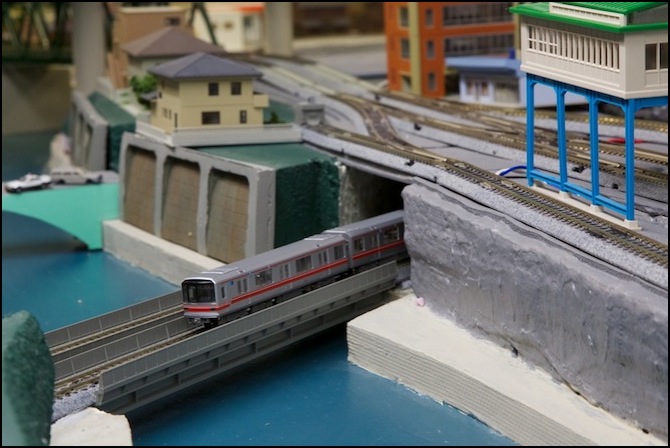
Tōkyō Metro Tōzai Line Series 05
These are actually an older train, dating from 1988, although still in service and looking more modern due to the curved cab window.
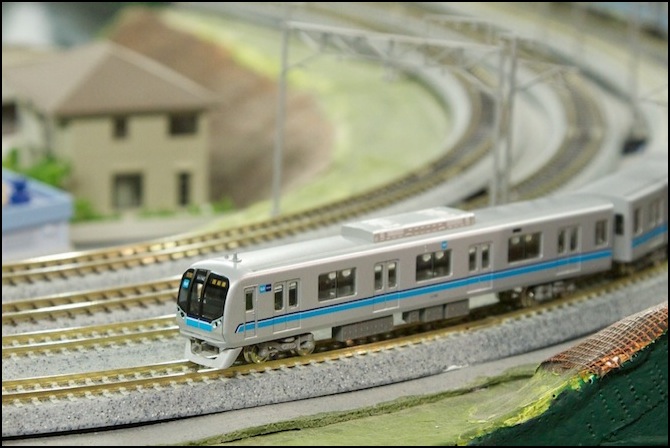
Tōkyō Metro Tōzai & JR East Chūō-Sōbu Line E231-800
This is an E231 series commuter train designed for run-through operation into the Tōzai Line subway system. For this use, it was equipped with emergency exit doors at each end, as well as being slightly modified in shape from a standard E231.
